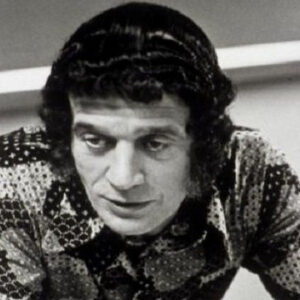Anatole Broyard worked as a writer, literary critic, teacher, and editor throughout the most of his life. Broyard spent 15 years as a book critic for the New York Times Book Review, followed by three years as an editor. He continued to produce short tales, personal essays, and book reviews while teaching creative writing at the college level. His piece “Portrait of the Inauthentic Negro,” which appeared in a 1950 edition of ‘Commentary,’ looked at black individuals who pretended to be white in order to gain access to chances that a black man at the time did not have. Broyard, ironically, lived as a white man, denying his mixed race origins, despite the fact that most people around him were oblivious. When he was diagnosed with prostate cancer, he began working on his book. As a result, he put it on hold to compose a collection of stories about illness and death, which were published in the New York Times Magazine and The Book Review. The essays were collected and published in a book named ‘Intoxicated by My Illness: And Other Writings on Life and Death’ two years after his death. After his death, he was widely chastised for failing to acknowledge his African-American background and passing himself off as white.
Childhood and Adolescence
Anatole Broyard was born in New Orleans, Louisiana, on July 16, 1920, parents Paul Anatole Broyard and Edna Broyard. His father worked as a carpenter and a builder. Anatole was the younger of two sisters.
In 1937, he graduated from Boys High School and entered Brooklyn College. He enjoyed reading but despised studies, and as a result, he dropped out of college after only a few years.
Career of Anatole Broyard
After dropping out, he worked odd jobs. He claimed to be white on his Social Security application despite being of mixed origin.
During World War II, he enlisted in the army in 1942. Since the services were still segregated, he pretended to be white once more and attended the officers’ school. He was a member of the 167th Port Company in New Guinea.
He received a G.I. Bill as a result of his service in the war, which gave a variety of benefits to returning World War II veterans. Broyard attended the New School for Social Research on his G.I. Bill to study psychology and modern art.
After the war, he kept his “white” identity and hoped to be a writer. He had started writing before the war and now believed it was time to devote himself fully to his love.
By that time, he had married and had a child, but his wife did not support his literary ambitions, so he left her and moved to Greenwich Village. With his war funds, he incorporated himself into the village’s literary life and founded a bookstore.
Only a few modernist writers he adored, such as Louis-Ferdinand Céline and Franz Kafka, were represented in his bookstore. He did not handle his bookstore like a business because he was a bohemian, but rather as a gathering place for like-minded people.
During the 1940s, his stories were first published in popular pocket-books such as ‘Modern Writing,’ ‘Discovery,’ and ‘New World Writing.’
In 1948, his piece ‘Portrait of a Hipster’ was published in the magazine ‘Commentary.’ He described a hedonistic hustler living on the outskirts of society in this article, a figure that Norman Mailer would subsequently popularize in a later essay.
The ‘Commentary’ published his ‘Portrait of the Inauthentic Negro’ in 1950, which was inspired by French philosopher Jean Paul Sartre’s work.
Being of mixed origin, he struggled with his racial identity on a regular basis. Though his compositions, such as ‘Portrait of the Inauthentic Negro,’ often betrayed his racial confusion, he refused to officially acknowledge his African-American origin.
He supplemented his writing income by teaching creative writing at Columbia University and the New School at New York University. He had also established a solid reputation as a book reviewer by this time, and he contributed daily book reviews to the New York Times.
In the 1970s, he began penning short personal essays in the ‘New York Times,’ which garnered him a lot of attention. In 1980, his writings were gathered and published as ‘Men, Women, and Anti-Climaxes.’
Major Projects of Anatole Broyard
‘Intoxicated by My Illness,’ his autobiographical essay, was published posthumously and received widespread recognition. He valiantly detailed his battle with cancer in this memoir, as well as his thoughts on life, disease, and death.
Personal History and Legacy
Broyard was married to Aida Sanchez for a short time. When he returned from World War II service, they divorced. Gala, their only child, was born to them.
When he was 40 years old, he married Alexandra Nelson. Alexandra, a Norwegian-American woman, was much younger. They were the parents of two children.
In 1989, he was diagnosed with prostate cancer. Despite his failing health, he continued to write until his death on October 11, 1990. He had kept his African-American ancestry a secret from his children until soon before his death, when it was revealed to them.
He had promised himself throughout his life that he would create a magnificent novel. He talked about it a lot, and it sounded like he was serious about writing it. However, he never finished the novel.
Estimated Net Worth
Anatole is one of the wealthiest novelists and one of the most well-known. Anatole Paul Broyard’s net worth is estimated to be $1.5 million, according to Wikipedia, Forbes, and Business Insider.


